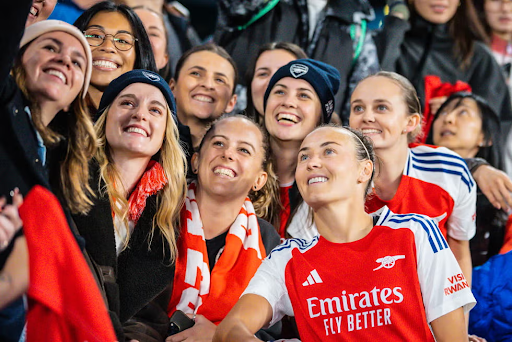Wasserman’s The Collective shares new data insights into unlocking the power of women sports fans

The GIST: The Collective — Wasserman’s women-focused data insights platform — published a new study on Monday advising the sports industry on how to engage with women as sports superfans and powerhouse consumers. By 2030, women are set to control 75% of global discretionary spending and lead 85% of household purchasing decisions.
- And since previous Wasserman research showed that 72% of women globally consider themselves avid sports fans, this important yet underserved demographic is one the modern marketer must consider. Let’s dive in.
The data: Women aren’t just a factor in household purchasing decisions: 48% of women fans are primary decision-makers for sports-related purchases. But despite this purchasing power, 39% of women fans say brands don't understand them. Among those surveyed, 66% believe women’s sports leagues fall short in appealing to women fans, and 72% say the same of men’s leagues.
- The data also showed that mothers are a critical demographic among women sports fans. Nearly all (91%) of women sports fans who are mothers are involved in their children’s sporting endeavors, making them a powerful influence in the $77B global youth sports industry.
- And while today’s marketing focuses on younger demographics, it’s worth noting that millennials are the most engaged fans of all. With three out of four millennial women considering themselves avid sports enthusiasts, this demo is the most likely to attend live sporting events and is the most receptive to sports sponsorships.
The trends: While the report recommends unique marketing methods to reach specific demographics, there are certain approaches that appeal to all women. The Collective describes women fans as “story-driven consumers,” reflected in the desire to see behind-the-scenes, docuseries, and influencer content.
- There’s also the widespread issue of “chronic time poverty.” U.S. women have 13% less free time than men (a gap that widens for mothers), stressing the need for short-form, accessible content.
The examples: Leagues are turning to authorities in the space that have banked goodwill with these fans — consider our millennial and Gen Z reach and resulting content partnerships with the NFL and NWSL. League partners are also stepping in to meet the needs of these fans, such as Canon’s NWSL storytelling lens and Unwell’s NWSL community events.
- And nearly everyone is looking toward the athletes and influencers they find relatable. Giggly Squad host Hannah Berner reported live from the Ryder Cup, Mariah Rose offers basketball breakdowns making sports accessible to everyone, and athlete influencers like Angel Reese and Ilona Maher are converting followers into fans from their lifestyle content.
Zooming out: Still, the experiences reflected in the data illustrate that women’s sports are still following the playbook of men’s sports too closely. If sports leagues and their partners want to reach more women, they need to design campaigns that work for them, specifically by emphasizing storytelling and community. Changing the world one play at a time.
Enjoying this article? Want more?

Sign up for The GIST and receive the latest women's sports business news straight to your inbox three times a week

